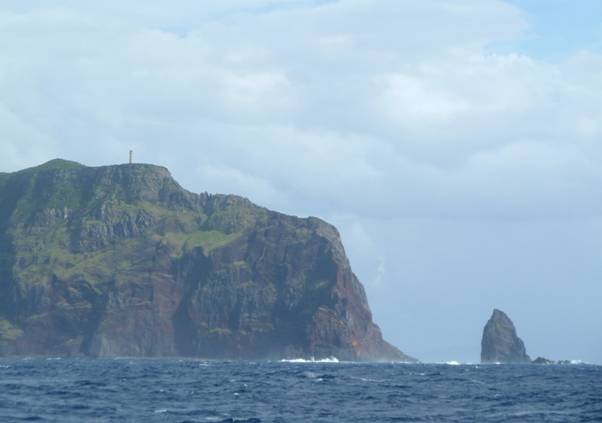The wind howls overhead but we are relieved to be out of harm's reach and safely anchored behind a headland. In case the anchor fails to find a good grip on the weedy bottom we stay onboard for the first 24 hours. But it holds well and soon we are able to go ashore to sample the Spanish cuisine – or cocina I suppose – in a nearby cafe. But later on another depression passes through, giving us another wet and windy night.
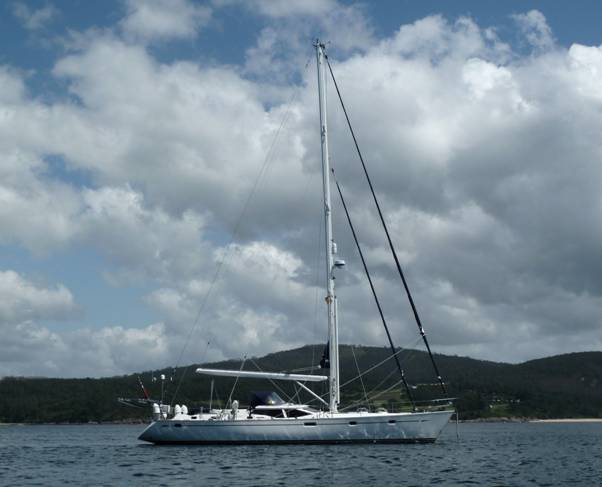 |
| At anchor in Camarinas |
The next day there appears to be a weather 'window' with a chance to make home before the next system is upon us. So Stella dives into the murky water in her 'shortie' wet suit – the warm Caribbean waters seem far way now - to check the stern gear. Soon the anchor is up and we are on our way. With good winds we sail up the Ria along the leading line of Punta de Lago light and head out once again into the North Atlantic.
 |
| Spectacular Galicean coastline near Muxia |
Where there are fish there are dolphins too, and later a school of small dolphins swims playfully past, their wakes illuminated by the moonlight.
Progress is fast and the next day we sail off the edge of continental shelf and into deep water. The wind veers so we take down the pole to sail on a broad reach with full canvas and even a little sunshine. Time for ice-cream and chocolate brownies as the passenger ship Azura passes to port. There's a naval exercise going on and a warship nearby calls Autopride to warn her to keep an eye open for a submarine. As Bob Dylan sings to us in the cockpit a low-flying aircraft, only a few feet above the sea, 'buzzes' us – the pilot gives us a wave.
Visiblity is now much improved and after only 48 hours at sea Ushant comes into view. It's a rather bleak and low-lying island, a rocky lee shore with a forlorn history of shipwrecks right through to modern times. An old Breton proverb says:
Qui voit Ouessant voit son sang, Qui voit Sein voit sa fin.
"He who sees Ushant sees his blood, He who sees Sein sees his end".
We opt for an easy time and keep outside Ushant and its rocky inshore passages with their strongly running tides, then turn to the northeast to head up the English Channel. Headed by the wind we opt to motor for a while to keep our speed up. Too slow and our 'window' will run out, leaving us with strong headwinds. Onwards we sail, past Roche D'Ouvres, then Guernsey, Alderney and Cap de la Hague, all visible in the clear air.
During the night we cross the shipping lanes, thankful for the AIS system that identifies most of the shipping and gives us each ship's course, speed, closest proximity and time to closest proximity. The lanes are extraordinarily busy and one wonders how we ever managed without such superb equipment on our previous boats.
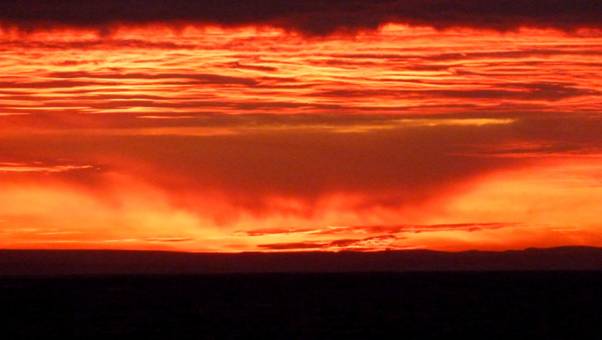 |
| Sunrise over the Severn Sisters |
The sky lightens and treats us to a spectacular sunrise over the white chalk cliffs that border the mouth of the Cuckmere valley, all only a short distance from our own home.
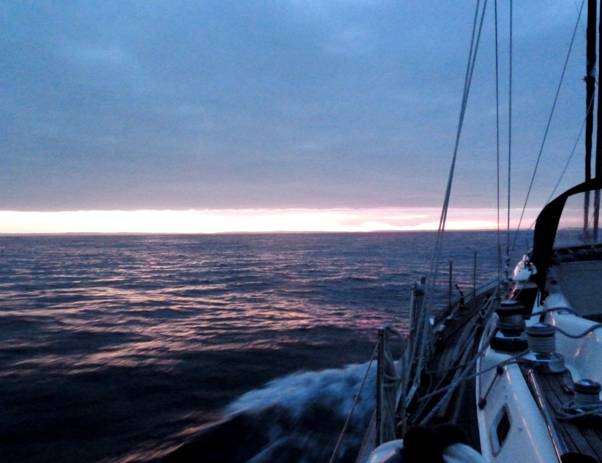 |
| Morning twilight at sea |
Then it's time to turn home, past the familiar lighthouse at Beach head and the fishermen on Eastbourne pier to arrive in time for an early morning lock-in at Sovereign Harbour.
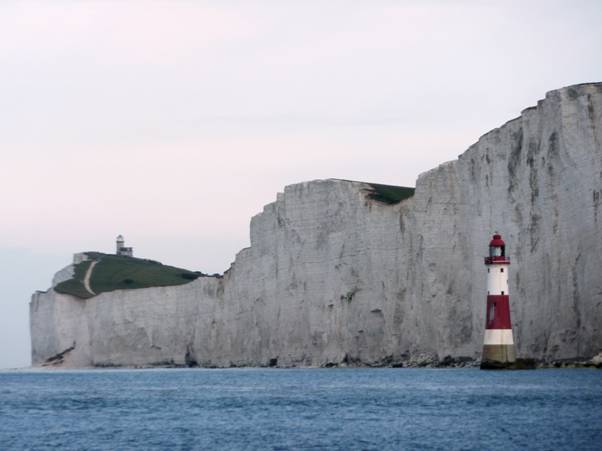 |
| Beachy Head lighthouse with Belle Toute tower visible beyond |
* * * * *
Home again.
And it feels like we have never left. 20,000 miles or so of sailing behind us, and yet....
...perhaps without travelling we never really understand and appreciate our own lives?
According to Chris Geiger: "All journeys eventually end in the same place, home."
Until the next trip - wherever, whenever - this is Keith and Stella signing off for now.
Thanks for reading, and thanks for being onboard with us!
